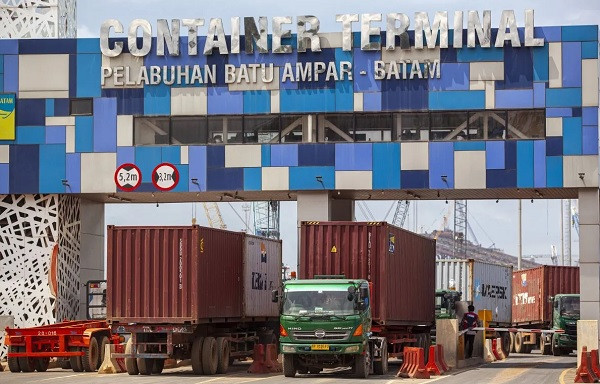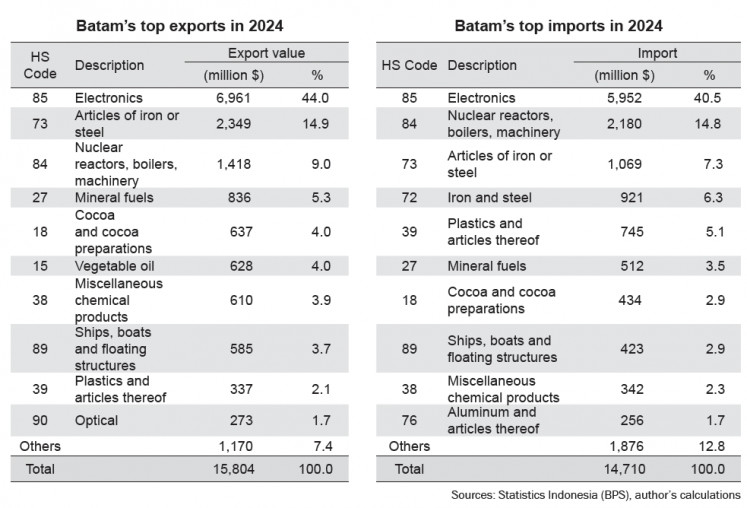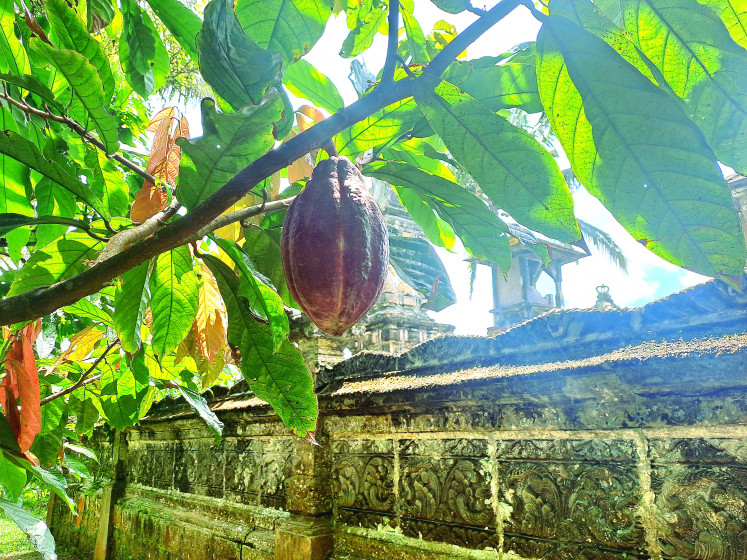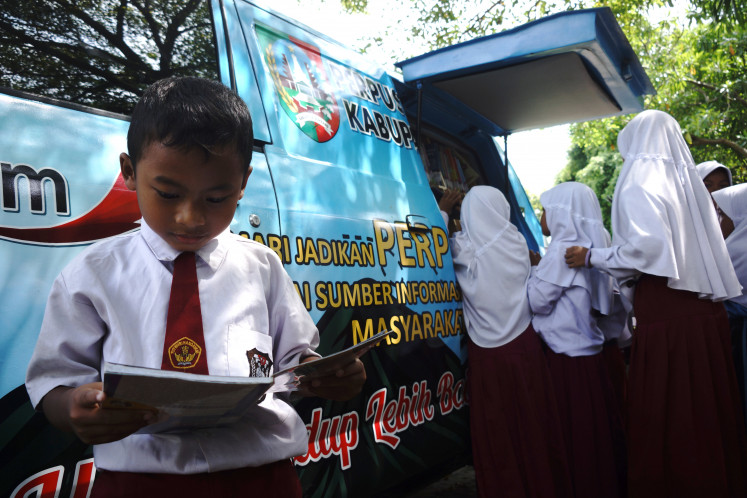Popular Reads
Top Results
Can't find what you're looking for?
View all search resultsPopular Reads
Top Results
Can't find what you're looking for?
View all search resultsBatam's strategic role in regional industrial development
Batam’s close geographical proximity to Singapore and Johor, Malaysia could lead to lower transportation and logistics costs.
Change text size
Gift Premium Articles
to Anyone
T
he manufacturing sector is widely recognized as a key driver of economic growth, contributing to the acceleration of income per capita rise, employment creation and overall economic welfare increase. Subsequently, in the last five years, Indonesia has actively implemented a downstreaming policy as part of its industrialization strategy. This policy is motivated by the fact that Indonesia has abundant mineral resources, including nickel, bauxite, copper and tin.
On top of that, we would highlight that industrialization involves a wide range of policy options, not solely the downstreaming policy. The next question is: What strategies should we implement to accelerate industrialization in Indonesia beyond the downstreaming approach?
We suggest that we should consider which manufacturing industries should be promoted and which regions should be facilitated as the main drivers of industrialization.
The manufacturing sector choice
The current global manufacturing development is characterized by interconnected relationships among countries. No nation has developed its manufacturing sector entirely independently, without relying on imported components or exporting parts to other countries. In other words, no single manufacturing product is produced entirely with all its components sourced and assembled within one country. This phenomenon is commonly referred to as the global supply chain.
All evidence suggests that interdependencies between countries are very high, fostering mutual benefits through cooperation in manufacturing production. This collaboration often takes advantage of economies of scale, supported by close geographical proximity, which results in more efficient logistics and lower transportation costs. As a result, the average cost of manufacturing products worldwide can be reduced, making global production more efficient.
Over the past few decades, the economies of ASEAN countries have been growing together, with very high interdependencies in manufacturing development, particularly in electronics products. Note that electronics (HS Code 85) is the largest traded product globally, reaching US$3.6 trillion in 2024.
The data indicates that interdependence in electronics manufacturing is very high among Southeast Asian countries (including Indonesia, Malaysia, Singapore, Thailand, Vietnam and the Philippines) and major electronics-producing nations in Asia (such as China, Japan, Korea, Taiwan and Hong Kong). The total value of electronic product exports and imports among these countries is approximately $2.3 trillion, representing 65.3 percent of the global electronics trade.
The location choice of Batam
The choice of location is a key factor in driving industrialization. Areas that are geographically close to other industrial centers are likely to experience rapid growth by benefiting from lower logistics and transportation costs. In other words, the agglomeration of industrial centers naturally supports surrounding regions, primarily through reduced production costs, such as lower wages.
In the Malay Peninsula, the key manufacturing hubs in Southeast Asia are Singapore and Johor, Malaysia. Both regions have announced plans to implement an integrated corridor aimed at accelerating industrialization in both Malaysia and Singapore. The governments of Malaysia and Singapore are officially cooperating to develop the Johor-Singapore Special Economic Zone (JS-SEZ), which seeks to strengthen strategic partnership and improve connectivity between the two countries.
We find that Batam is highly strategic due to its close geographical proximity to Singapore and Johor, Malaysia. To date, Batam has shown strong export interconnectedness, with its main export products being electronic goods (HS Code 85), totaling $6.9 billion, which accounts for 44 percent of Batam’s total exports. Its primary import product is also electronics, valued at $5.9 billion, representing 40 percent of Batam’s total imports. These findings indicate that Batam has significant potential to become a part of regional manufacturing hub, particularly for electronic products.
Batam's upcoming initiatives
Batam should capitalize more on the growing industrialization in Singapore and Johor, Malaysia. There are several reasons why Batam could serve as a part of global supply chain in the agglomeration process in South East Asia.
First, Batam’s close geographical proximity to Singapore and Johor enables better integration through improved infrastructure connectivity. This could lead to lower transportation and logistics costs, making Batam a preferable location for production facilities if production costs are lower than those in Singapore and Johor.
Second, the wage rates in Batam are significantly lower than in neighboring regions. The minimum wage in Batam is approximately Rp 4.7 million ($290), which is lower than in Johor, Malaysia, at around 1,700 ringgit (about Rp 6.5 million, $401), and much lower than in Singapore, at about S$1,600 (approximately Rp 20.4 million, $1,260).
Third, the availability of labor in Batam is substantial, with workers coming not only from within Batam but also from outside the island. In 2024, the number of migrants moving to Batam was 61,300. Over the past five years, migration to Batam has ranged between 60,000 and 70,000 people annually, indicating reflecting a growing economy that is generating new employment opportunities and attracting new workers.
Additionally, improving infrastructure quality and strengthening institutional frameworks, such as bureaucratic efficiency, government effectiveness, regulatory quality, rule of law and anti-corruption measures, are crucial. A comparative analysis at the country level reveals that Indonesia still lags behind Singapore and Malaysia in these areas.
In conclusion, Batam’s geographic proximity positions it well as a part of global supply chain within the manufacturing agglomeration of Southeast Asia’s Malay Peninsula. To fully benefit from the region’s industrial growth, Batam indeed must enhance its infrastructure and institutional quality, fostering greater economic and geographic integration with Singapore and Johor, Malaysia.
*****
The writer is the head of industry and regional research at Bank Mandiri











